KW Drone Dialogues is a site-specific installation that is part of the long-form research-creation project “The Cultural Life of Drones.” If culture is the range of social practices through which one comes to know and engage with the world, then drone cultures might be the myriad of ways in which drones are embedded into our everyday lives as well as our ideas about what kinds of life (and death) that drones make. By investigating the logistics and relationships of labour that connect communities to drone technologies and the industries that surround them, my intent is to create a conversation about the ways in which drone technologies contribute to the making of culture and how these relations might be apprehended via an aesthetic lens.
Unmanned Aerial Vehicles or Drones?
The term “drone” itself refers to a very diverse range of aerial systems, ranging from palm-sized quadrotors to enormous solar-powered aircraft that fly at 70,000 ft. for weeks at a time. Apart from the fact that they are remotely piloted (or “unmanned”), these systems may seem to have very little in common. But one thing they do share is the ability to generate controversy with regard to their use. The basis for these challenges often has to do with the ethics and logistics of unmanned technologies. For example, drones used in military campaigns have drawn scrutiny about their legality under the tenets of International Humanitarian Law. With regard to civilian drones, technologies are outpacing the evolution of current airspace management systems that can safely integrate UAVs. Nor are there adequate privacy law frameworks to handle aerial surveillance. Despite these difficulties, the drone industry is on the cusp of a massive expansion to which regulatory bodies are just beginning to catch up. But management is not the only concern: drones also trigger cautions and fears about living under conditions of continual surveillance, a mode of seeing that carries with it a set of social and cultural practices that are deeply embedded in both governmental structures and ways of knowing – systems, in the Western world, that are themselves imbued with histories of empire and state building. There are also worries about the potential role of artificial intelligence in the drone industry. When one considers, debates, and reacts to the emergence and proliferation of drone technology, one encounters controversy at every turn.
The Drone Gaze
Drone technologies have enabled remote forms of sensing that extend the range and scope of visual capture and therefore the human field of perception. Arguably, drone technologies have also changed the capacity for vision – what or who it becomes possible to see, when and why. With this documentary project I’m working with the concept of “drone gaze” as a way to think about how vision is both historically situated and techno-culturally mediated. For instance, how do the visioning regimes enabled by drone technologies alter the ways in which one learns to see? Take, for example, the Gorgon Stare video capture technology developed by DARPA for the United States military. It has a visual range of up to 100 square kilometres resulting in detailed real-time video capture of several gigabytes per minute. Of course these kinds of innovations require other new technologies to aid in the management and interpretation of such massive amounts of visual data. In 2017, the Pentagon created an “Algorithmic Warfare Cross-Functional Team” to develop and harness algorithmic systems that use machine learning and artificial intelligence to look for patterns in visual data. While these are current examples, developments in visual capture techniques have long been associated with innovations in industrial technologies, and in particular, with military vision – how technologies of seeing might magnify and expand the space of the battlefield. How one sees, as well as what is perceived through the camera lens, is intimately connected to these histories and their contemporary applications. I am very cognizant of this troubled history of seeing with respect to my choices of representational practice for this project.
Drones
The 2-dimensional silhouettes of drones on the gallery walls are representative of the UAVs that each of the participants encounters in their work. They are reproduced at approximately actual size, with the exception of the Predator, which is 25% larger than it appears here.
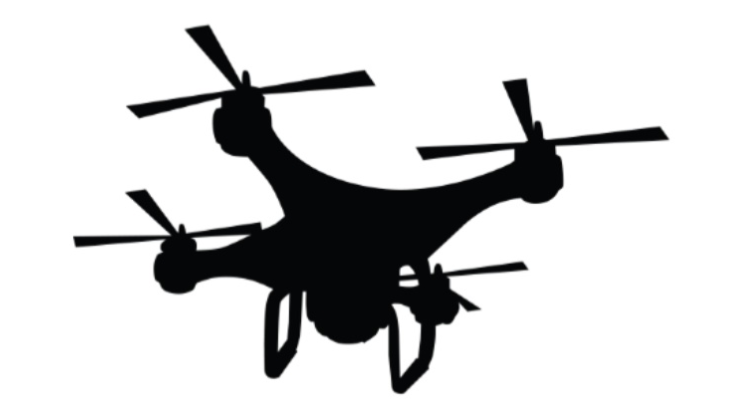
General Atomics MQ-1 Predator
Avidrone 210TL
eBee SenseFly
DJI Phantom
Documentary Practice
While social documentary photography is the anchor for this project, the documentary form is itself not innocent of the dynamics of looking. As a researcher with training in ethnographic methods, I am aware of how documentary techniques (participant observation, recorded interviews, field work) have been taken up by scholars in ways that repeat problematic relations of power and knowledge. This is also true in the context of the art world. But it is my view that documentary art practice has the potential to challenge normative forms of knowledge making. Indeed, the confusion and unknowability that may be part of an encounter with art (What am I looking at? What does it mean?) can interrupt claims to certainty. I am interested in destabilizing the ways in which documentary practices enter into the University as research and as pedagogy. Can social documentary offer opportunities to create and nurture connections across differences that challenge the status quo? Even as I work towards this goal, my own situated subject position limits my ability to see, interpret and represent. Indeed, with the aesthetic invitation, failure, ignorance, implication and resistance are part of the process of coming to know oneself in relation to others. This then, is the ethics that social documentary practice might offer.
For this project I taught myself how to use a medium format film camera that, along with a fixed focal length digital camera, I used to document my participants as they went about the daily tasks of their work. This was a slow process for me that involved a lot of uncertainty because my skill with the techniques was evolving. I was interested in the imperfections of this approach and how it upset the relationship between photographer and subject. These imperfections are visible in the project and signal my learning, but in actuality the encounter of trying to know the experience of others is always unfinished and imperfect: fragile, partial and necessarily fragmented. This is opposite to the ways in which drone data is interpreted and made significant – there is an attempt to generate a seamless narrative that represents some kind of truth or veracity. So my process is exactly the opposite of that.
I’m also very interested in how the juxtaposition between things, stages, and moments of interpretation where one is compelled to fill in the gaps. How one moves through space and makes associations between objects is interpretive work, and with a conceptual project like this one it may indeed feel like work to make those connections. This was definitely an intention with the project. Indeed, much of the “drone photography” that one can find on the Internet has a monumental aesthetic. Working in opposition to that impulse — in ways that are situated and fragmented — exposes how one is drawn to create a story from a sum of the parts. For me, this is what is most crucial about drone vision because, in its ambition to present a full picture, the ways in which meaning is crafted becomes invisible. The reality of drone technologies and the logistics and labour surrounding the industry is far more complex. Understanding how culture develops from and informs these practices leads to more ethical and complex responses – there are no easy answers. For the installation, I wanted to create a 3-dimensional space that compels the viewer to construct their own interpretation of what they think they are seeing. In some ways this process mirrors the interpretive work that goes into understanding the visual data that drone cameras can produce – partial aspects of a larger story are drawn together into meaning that is situated and context dependent. Drones are also physical objects, though many people may have never actually encountered one. I wanted to gesture to that materiality. At the heart of this project, however, are people. The four individuals whose portraits are featured here, graciously allowed me into their lives to document their work with drones: it is through them that I learned as much I did about the logistics and practices associated with drone technologies in our area.
Portraits
Kyle McKinnon is a flight instructor and Program Coordinator of the Remotely Piloted Aircraft Systems Program (RPAS) at the Waterloo Wellington Flight Centre, where he brings his vast experience with different UAV platforms and sensors to his understanding of the regulatory industry in Canada.
Branka Marijan is a senior researcher with the Project Ploughshares, a leading organization in disarmament and peace housed at the Kindred Credit Union Centre for Peace Advancement. She leads research into the military and security implications of emerging technologies, including the ethics of autonomous weapons systems.
Scott Gray is the founder and Chief Executive Officer of Avidrone Aerospace, a local aerospace engineering and manufacturing company that develops flight control systems and airframes for the drone industry.
Trina King is a cartographer and geospatial specialist who flies drone missions and produces scientific data sets for the Department of Geography at Wilfrid Laurier University.
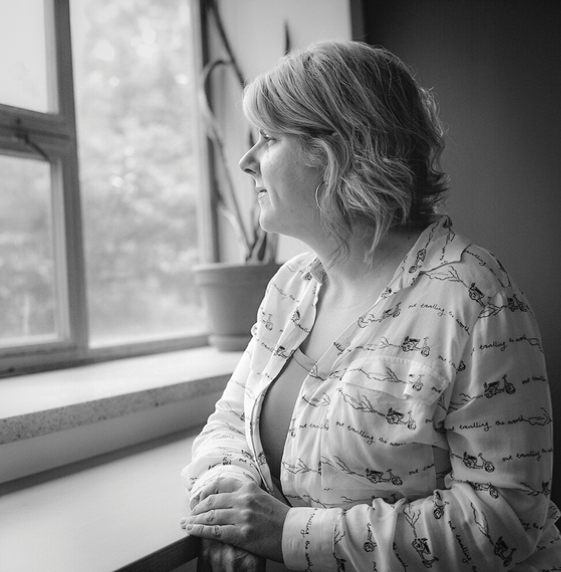
Documentary Photography
I spent time with each participant in a field setting related to their work and selected five images. In part, this approach was informed by my research into "pattern of life analysis," a technique used by security institutions to interpret the movements of so-called terror suspects. By tracking people's movements, the goal is to build an activity narrative that can provide clues to suspicious activities. It's essentially a data profiling technique. I'm interested in how these associations get made and what it might look like if drones too, were tracked in such a way.
I enrolled in the Advanced UAV training course at the Waterloo Wellington Flight Centre where Kyle McKinnon teaches, accompanied him on a flight review, and also helped him out with the flight mission at Conrad Grebel University College that Kyle completed specifically for this project. I documented Trina King at her office at Wilfrid Laurier University. I spent time with Branka Marijan in her office where she performs her research and also documented one of the drone props that she uses in her public education work. I interviewed Scott Gray at Avidrone Aerospace headquarters in Breslau, Ontario. Due to the proprietary nature of his team's work in the industry, my access was limited and so my visual renderings are primarily adapted from stock photos of drone test flights.
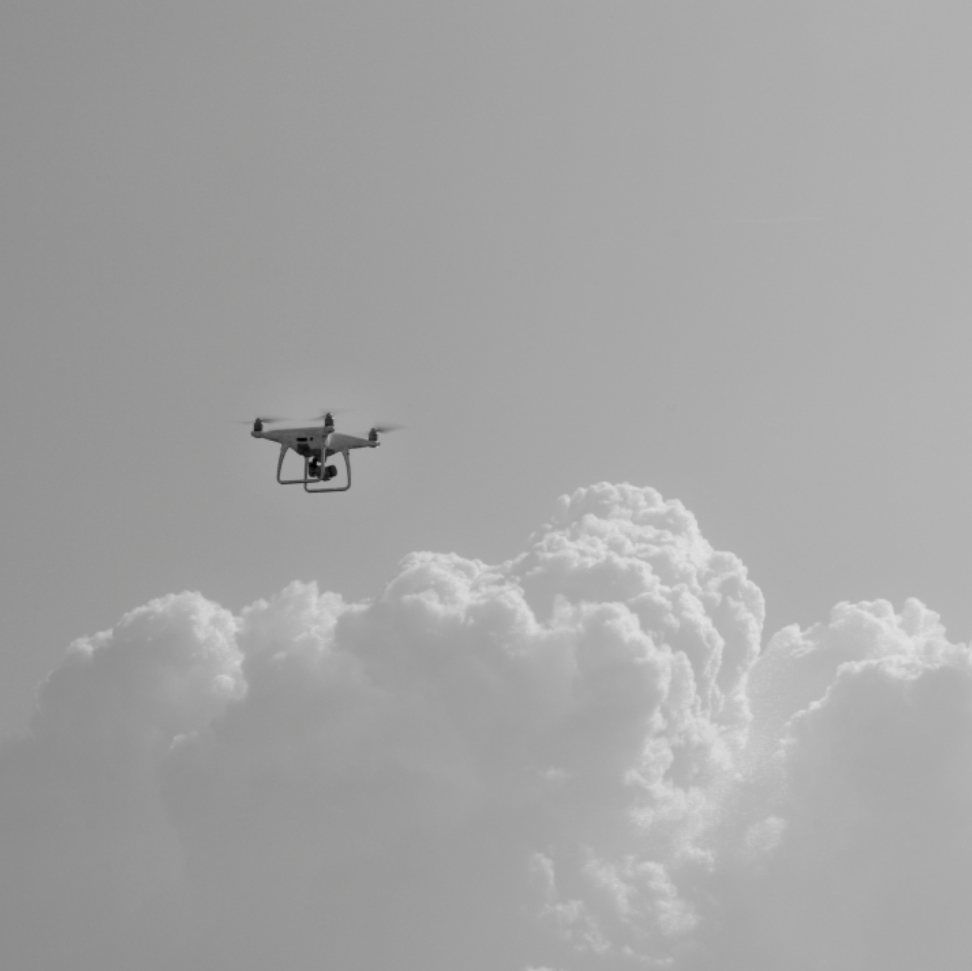
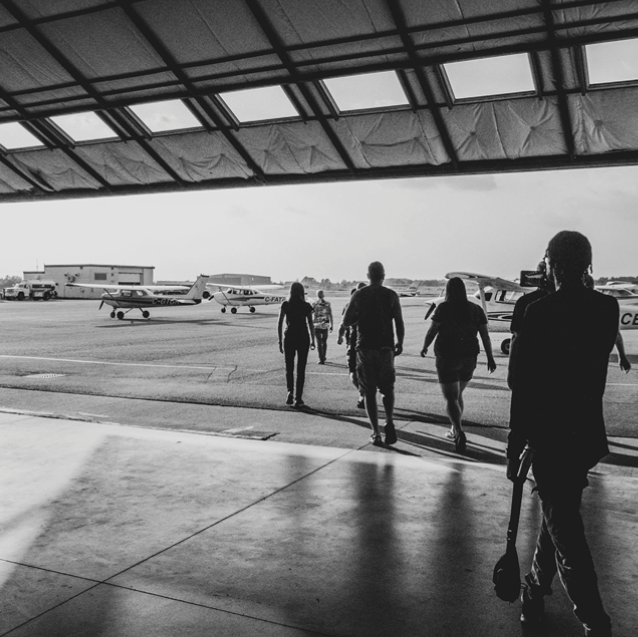
Data sets
With this element of the installation I reference how the visual data collected by particular drone sensor platforms are used in mapping and interpretation. The translucent material on which the data sets are printed harkens to the vellum used by cartographers. In addition, the scale and clarity of the images are different depending on the amount of visual data that each unique drone sensor captures. These differences are important to the representational precision that a particular data set enables. For example, detailed sensor data from targeted military strikes is not available to the general public, hence the blurry YouTube footage.
Image taken by DJI Mavic on a flight mission at Conrad Grebel University College flown by Kyle McKinnon.
Detailed aerial view of beach rehabilitation efforts underway by Parks Canada at Point Pelee National Park, taken on a drone flight piloted by Trina King for the Department of Geography at Wilfrid Laurier University.
YouTube screen captures of US military targeted drone strikes in Pakistan, uploaded by Top News New York and used by Branka Marijan in her research.
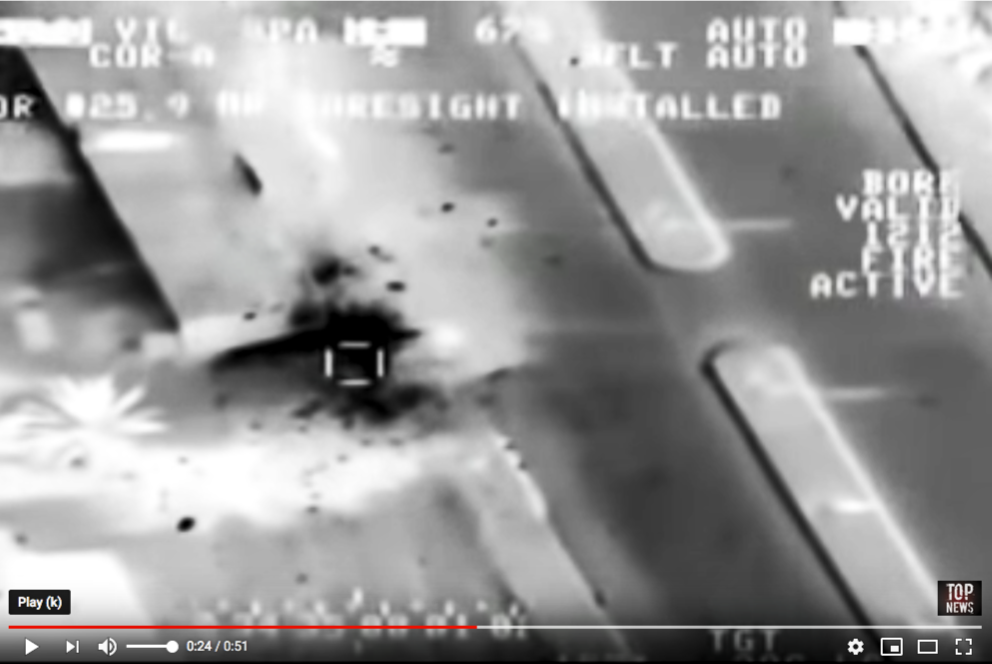
About Sara Matthews
Sara Matthews is a writer, curator and researcher based in southern Ontario. Working primarily in the field of research-creation, her projects explore the relations between visual culture and martial politics as well as how communities craft creative modes of relationality and survival in response to practices of state securitization. She teaches in the Department of Global Studies at Wilfrid Laurier University where she is an Associate Professor. Her curatorial work considers how encounters with conflict and loss emerge as new forms of futurity, materiality and placemaking.
Sara’s critical art writing has appeared in PUBLIC, FUSE Magazine and in exhibition essays for the Robert Langen Gallery, Circuit Gallery, the Ottawa Art Gallery, the Doris McCarthy Gallery and as a blog for Gallery TPW.
Credits
Created by Sara Matthews.
Sponsored by the Kindred Credit Union Centre for Peace Advancement.
Thank you to the participants who generously shared of their time and experience to make this exhibition happen. Trina King, Wilfrid Laurier University; Branka Marijian, Project Ploughshares; Scott Gray, Avidrone Aerospace; Kyle McKinnon, Waterloo Wellington Flight Centre.